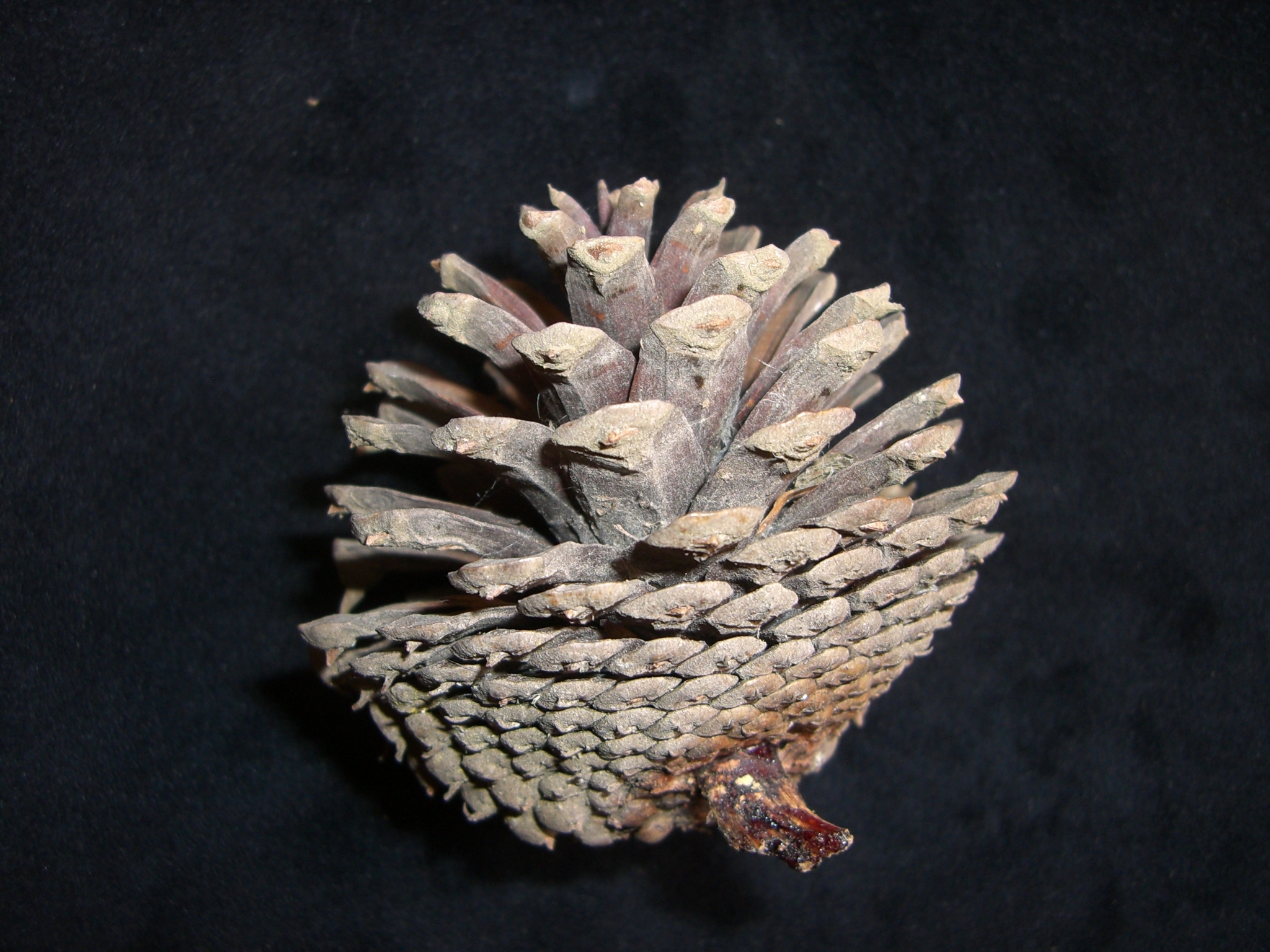
Broadly domed, dense tree 15-35 m tall. Bark deeply fissured, dark grey, orange-brown beneath. Buds more or less cylindrical, resinous, scales mostly closely pressed down. Young shoots changing from green to reddish brown. Leaves in 2's, 10-15 cm long, stiff, spreading, grey-green, persistent basal sheaths about 1.5 cm long at first. Cones solitary or in clusters of 2-5, ovoid-conical, 6-9 cm long, stalked, persistent and remaining closed for many years and sealed with resin, often requiring fire to open; base asymmetrical; scales on one side of the cone with conical knobs and stout spines. Seeds 6-8 mm long with a dark-coloured wing 1.5-2 cm long.
Grows naturally in scattered populations in poor soil along coastal California adjacent to its close relative P. radiata. Quite rare in cultivation in Australia. Naturalised on the North Island of New Zealand.
California.
Cones persistent, generally remaining closed, asymmetrical, the tips of scales generally having prickly, swollen knobs on one side of the cone.
ACT: Yarralumla (Banks St, E side of forestry school). VIC: Kew (Kew Cottages); Creswick (Forestry School; Parklakes Reserve near tennis courts, site of old Acclimatisation Society and many old conifer plantings, few of which suvived recent fire; Sawpit Gully, softwood demonstration area ptd 1981); Malmsbury (Reservoir). TAS: Hobart (Government House; Queens Domain).
Source: (1995). Pinaceae. In: . Horticultural Flora of South-eastern Australia. Volume 1, Ferns, conifers & their allies. The identification of garden and cultivated plants. University of New South Wales Press.
